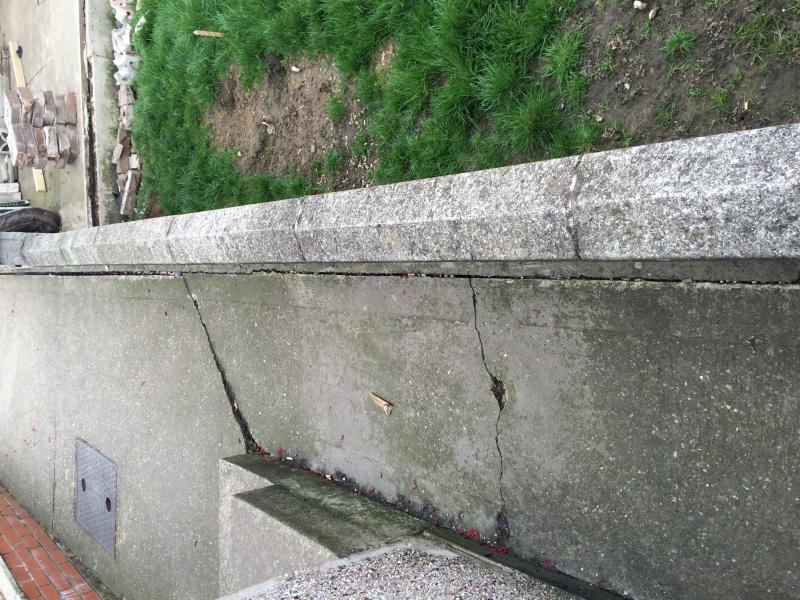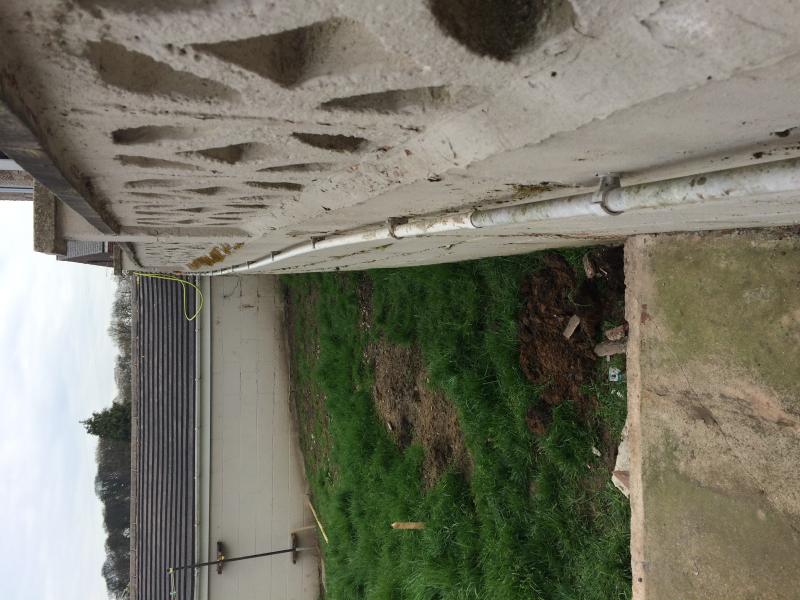Hi - newbie here after some advice please.....
We purchased a bungalow couple of years ago which sits on a hill, the garden to the property is about 7ft down accessed by steps, the garden slopes downwards to a retaining wall at the bottom.
The wall in question I have a problem with is the one at the top of the garden, in theory what the property sits onto ( there is actually a concrete pathway between property and wall in question, so it doesn't actually sit on top of it )
the wall is constructed from blocks and we've noticed this winter that it has bowed out, which has also caused the concrete above to drop and crack ( we think ) quiet badly, a couple of inches in some places.
The wall is 10m long and about 7ft high, we can only see the exposed side, so don't know if its single or double (hoping its double but doubting after renovation of inside).
To compound issues, we had a cracked drain which we didn't notice and all the water was seeping down into the garden through that wall which we think has been the route of the problem in the main, the drains have now been fixed, but we are left with a severely bowed block wall and dropped concrete etc above it.
I don't think we can take the wall down, I am worried that if we do, the rear of the property may go with it ! as that wall is retaining all the foundations etc etc as its only 3ft away from the external wall of bungalow.
SO.... what can we do ?
Could we have another wall with pillars built in front of existing and tie it in to support it ? Would this offer the required support etc to stop it from going anywhere ? Or just be a waste of money ?
How far away from the existing wall should a new wall be built ? should it be backed filled, if so with what ?
Do you guys have any experience of this ? Or can maybe offer some other solution to our problem ?
We have a tight budget, house is actually for sale after renovating it internally, so funds are low, but we still want it right for the next owner and our own piece of mind etc.
Any suggestions please ??
Any help advice greatly received......
We purchased a bungalow couple of years ago which sits on a hill, the garden to the property is about 7ft down accessed by steps, the garden slopes downwards to a retaining wall at the bottom.
The wall in question I have a problem with is the one at the top of the garden, in theory what the property sits onto ( there is actually a concrete pathway between property and wall in question, so it doesn't actually sit on top of it )
the wall is constructed from blocks and we've noticed this winter that it has bowed out, which has also caused the concrete above to drop and crack ( we think ) quiet badly, a couple of inches in some places.
The wall is 10m long and about 7ft high, we can only see the exposed side, so don't know if its single or double (hoping its double but doubting after renovation of inside).
To compound issues, we had a cracked drain which we didn't notice and all the water was seeping down into the garden through that wall which we think has been the route of the problem in the main, the drains have now been fixed, but we are left with a severely bowed block wall and dropped concrete etc above it.
I don't think we can take the wall down, I am worried that if we do, the rear of the property may go with it ! as that wall is retaining all the foundations etc etc as its only 3ft away from the external wall of bungalow.
SO.... what can we do ?
Could we have another wall with pillars built in front of existing and tie it in to support it ? Would this offer the required support etc to stop it from going anywhere ? Or just be a waste of money ?
How far away from the existing wall should a new wall be built ? should it be backed filled, if so with what ?
Do you guys have any experience of this ? Or can maybe offer some other solution to our problem ?
We have a tight budget, house is actually for sale after renovating it internally, so funds are low, but we still want it right for the next owner and our own piece of mind etc.
Any suggestions please ??
Any help advice greatly received......




